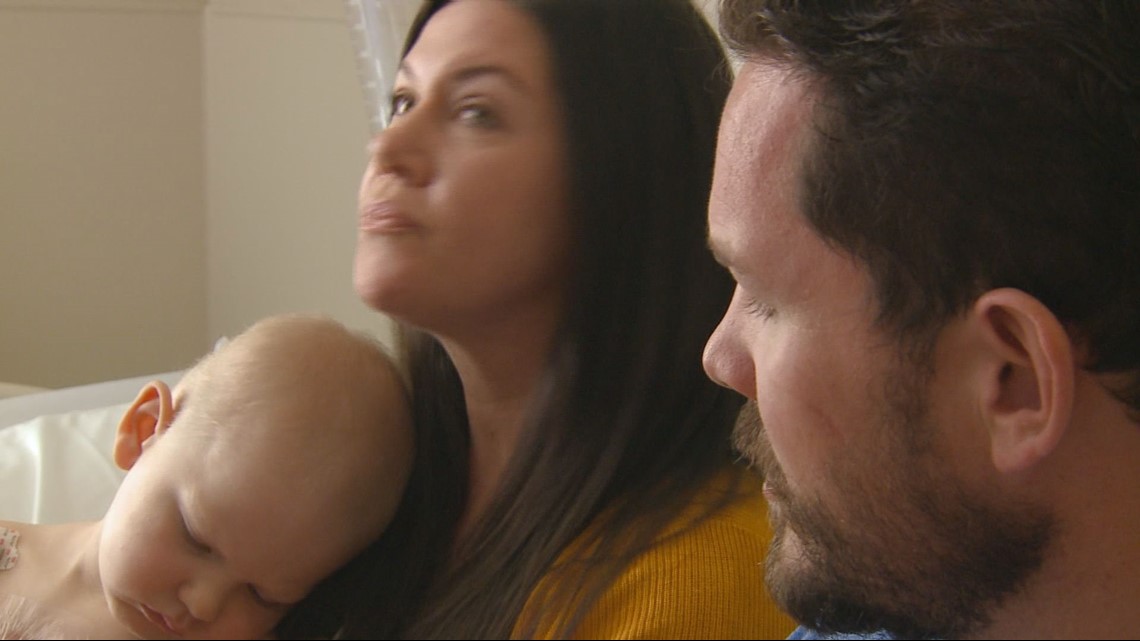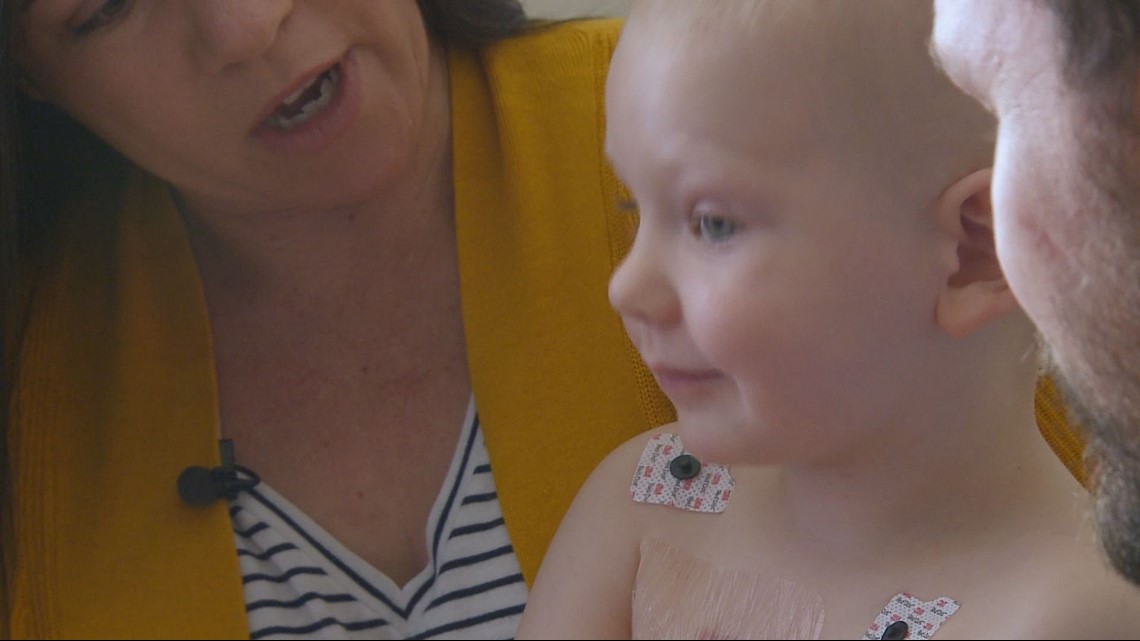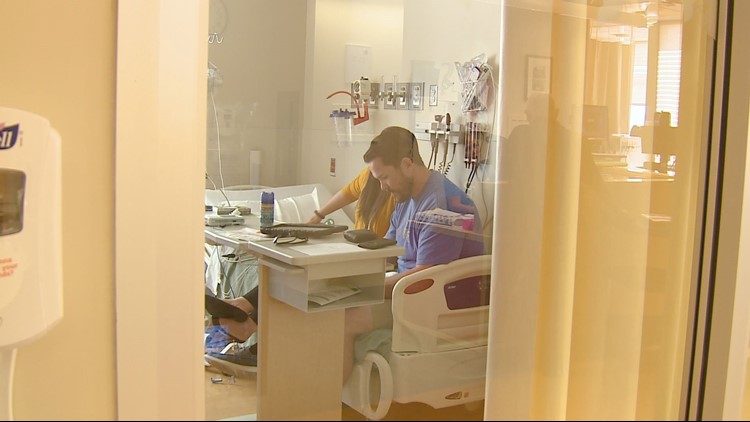Editor's note: September is Childhood Cancer Awareness month. 9NEWS' Liz Kotalik will share the story of a brave child fighting a tough battle each Tuesday throughout the month.
DENVER - One boy's battle with cancer illustrates the struggle researchers have when it comes to finding money to treat the disease -- and how donors are helping to fill that gap.
The Neidigks have traveled over 400 miles from Albuquerque to Aurora, away from their young daughter at home, to try and save their 3-year-old son Mikey’s life.
“He’s been the normal pistol the whole time,” Nathan Neidigk said. “But the leukemia hasn’t been going away.”
Close to remission
Mikey in 2017 was diagnosed with Acute Lymphoblastic Leukemia, a childhood cancer that occurs when a bone marrow cell develops errors in its DNA. Although he is close to remission, the last cancer cells in his body won’t go away.


“Our doctor kind of explained it like a weed or a tree,” Neidigk said. “The original medicine chopped out the tree, it’s all gone. But the roots are still down there.”
Children’s Hospital Colorado is one of the only places in the western United States able to deliver a new treatment that has a chance to solve the problem.
It’s called CAR T-Cell therapy; a method that uses Mikey’s own T-cells (a type of white blood cell) to fight -- and often win -- a tough battle.
“It’s changing our landscape completely,” said, Amy Keating, a pediatrician at Children’s Colorado. “It’s a very, very different approach than we’ve had in the past.”
The treatment was approved by the FDA earlier this year. Mikey’s T-cells were separated from a blood sample, sent to a lab on the east coast, tweaked to specifically target his leukemia, sent back to the hospital and then injected back into Mikey’s body.
So far, trials have seen 90 percent of patients with Leukemia go into remission.


It’s a therapy created in part by Terry Fry, a researcher who used to work at the National Institutes of Health, but now is a professor of pediatrics and immunology at University of Colorado School of Medicine at the Anschutz Medical Campus and the Robert and Kathleen Clark endowed chair in pediatric therapeutics at Children’s Hospital Colorado.
A shrinking budget
Fry worked on this project for two decades with researchers all over the world. A portion of the millions spent on the research came from the government.
“That budget is shrinking,” Fry said. “[National Institutes of Health’s] budget is really shrinking. It’s becoming more and more difficult.”
There’s a gap felt in many, if not all, pediatric cancer research projects. Fry said without donor funding, the 25 different projects and 300 clinical trials for Children’s Hospital Colorado happening now would not occur.
“There’s been an increasing percentage of the research budget at most academic institutions that’s coming from sources like donors. Essentially, the philanthropy is making up that gap," Fry said.
NIH's website says one challenge in conducting research on childhood cancer is that cancers in children and adolescents are relatively uncommon.
"Childhood cancers represent less than 1 percent of all new cases of cancer diagnosed in the United States each year,” the website says. “Another challenge is that the causes of most childhood cancers are unknown… As a result, identifying opportunities to prevent childhood cancer may be difficult.”
But Fry said he wants to keep immunotherapy research in the forefront because there's still a long way to go.
“To treat a patient with CAR T-cells, [and] a month later to do a bone marrow and to go to that family and say ‘your child is in remission’, that’s unbelievable," Fry said. "But then imagine 3 months later, doing another bone marrow, and seeing the cancer has come back, and it has become resistant to that very effective therapy, that’s unbelievably frustrating.”
But it’s the possibility of remission that keeps the Neidigks going.
“As we’ve learned more about it, it’s just been like a breath of fresh air I think for us.”
Fry said people who are interested in helping should contacting their congress member or senator about increasing the NIH budget to fund more research for childhood cancers.
Donate directly to research through these organizations:
- Children's Hospital Colorado Foundation
- St. Baldrick's Foundation
- The Morgan Adams Foundation
- Piper the Princess Warrior
RELATED STORIES:



